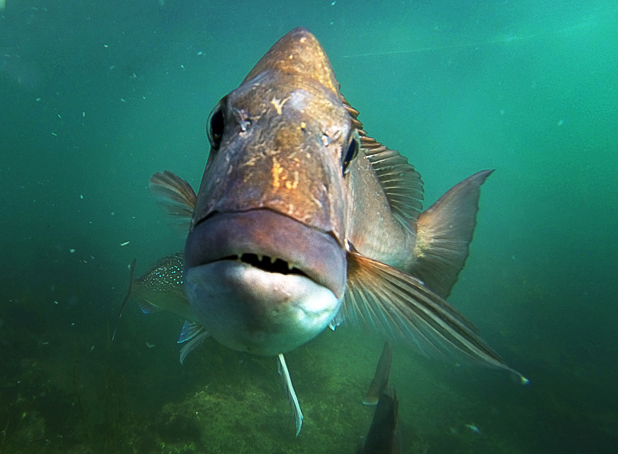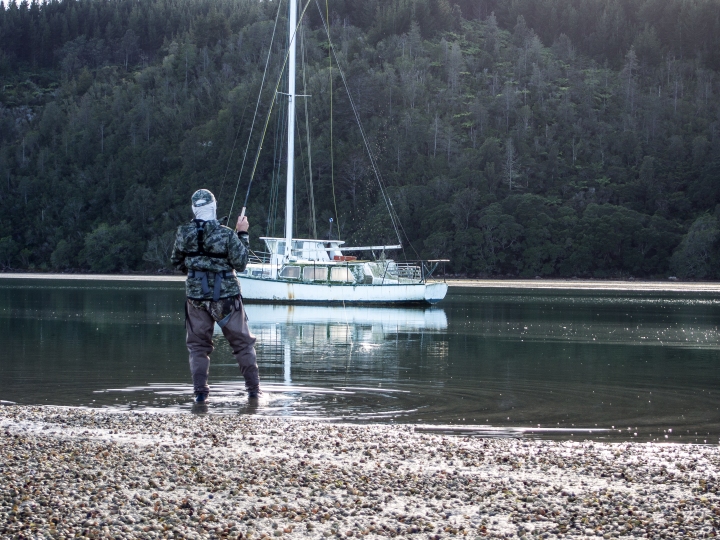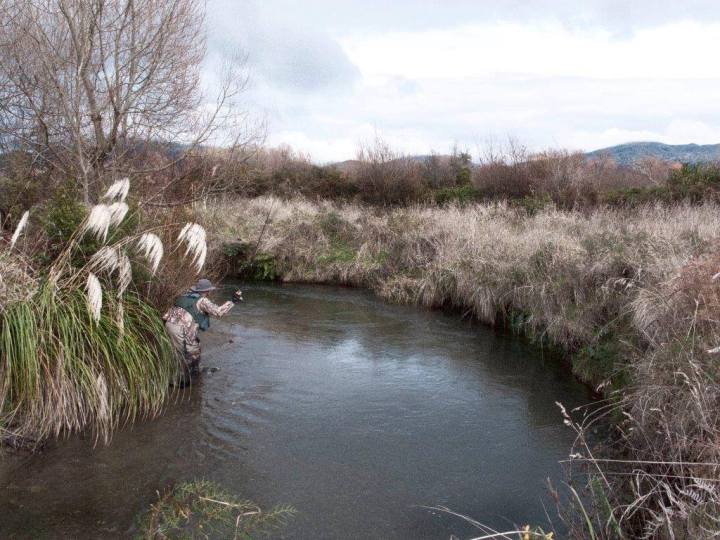Predators are very skilled at using shade to ambush prey.
Whether it be hiding in wait under a moored boat or wharf, attacking prey in the margins at dawn when the light angle is low and the prey is staring directly into the rising sun or hiding behind a sunken obstruction in a river, predators regularly use shade to improve their chances of success when feeding.
I have mentioned the use of shade by predators before in several articles, especially in relation to targeting moored boats (https://activeanglingnz.com/2015/08/02/targeting-moored-boats-with-soft-plastics-and-flies/).
However, it was not until I recently read a very insightful piece on this in “The book of lures” by Ron Calcutt and Tim Simpson (ISBN 0 7318 1208 5) that it all started to make sense. I’ve reproduced the key passages below as it is a very eloquent summary of how predators use shade and why it works in their favour.
“To appreciate the value of shade as a fish attractor, consider this: in the deadly game played by predator and prey, early detection of victim or opponent can have a huge bearing on the outcome. Even a fraction of a second may be the difference between death and survival.
Many predators use shade to gain an advantage, as a fish in shade can spot a fish in sunlight about 2.5 times further away than it can be seen itself. This is partly because the sensitivity of a fish’s eye to light is determined by the brightness of its environment. Sunlight entering the water is reflected off the suspended particles of silt and organic matter that give water its colour. These reflections bounce the light in all directions, up, down and sideways, which makes the water relatively bright around the eyes of a fishin the sun. In the bright light, the fishes eyes will adjust to the conditions by reducing sensitivity. The eyes of the fish in the shade, on the other hand, will have adapted to the lower light levels and so will be more sensitive to movement in the dimmer distance.
To understand this phenomenon, imagine you are entering a dark tunnel from bright sunlight. When you stand in the sun and look into the dark tunnel, you can see very little in the dim light inside. Once you enter the darkness, however, and give your eyes time to adjust, not only can you see your surroundings but you can also see objects out in the sunlight. Your eyes will be about 20% more sensitive than when you were in the sun. Couple this increased sensitivity in vision with the fact that a fish in the light is twice as visible as a fish in the shade and you realise the enormous advantages that shade has to offer predator or prey – whichever uses it first.
This is one reason structure is so important to successful fishing. A bream under a dock, a bass behind a stump, a flathead beside a channel marker, a dolphin fish or bait fish in the shadow of a piece of ocean flotsam, are all using the benefit of the shade. Perhaps even a barramundi, poised on the edge of a dirty creek runoff as it pushes into cleaner and brighter estuary waters on a run-out tide, is gaining the advantage of the shade.
There are other points to consider here also. A predator ambushing from a position in the shade will be temporarily dazzled when it makes its dash into the sunlight to engulf its prey. This can help an angler, as the fish isn’t able to be as critical of the lure and leader in the final closing centimetres of its attack. The converse, though, is that because of the dazzling effect (like walking out of a tunnel), the fish will only travel a very short distance from its shade. It’s vision won’t be clear enough to attempt a sustained chase, so if it can’t line up the fatal blow from whe it sits, it will simply wait for another opportunity to come along. This illustrates the necessity of accurate casting or lure flare net in many forms of fishing”.
The fish that are being hunted are consequently very nervous about approaching shaded areas and are attuned to the danger. Sometimes though they have little opportunity to avoid the potential danger, especially if the channel narrows and the majority of the channel is covered by shade (e.g. the shadow cast by a boat hull, an underwater reef or overhanging trees). If you find such a spot spend some time methodically working your fly or lure through it as there will be a predator hiding there at some stage of the tide or point during the day.
Trout are adept at using shade to their advantage and often hide in the shade cast beneath an undercut bank. Positioned here they have a decided advantage when it comes to intercepting any prey that is moving downstream in the sunlit area of the river. I can vividly remember walking onto an apparently barren stretch of the Waiotaka River years ago and drifting a fly as close as I could to the far bank. It had been a hard morning up until that point so I never expected to catch anything and began to fish the stretch only half heartedly. Imagine my surprise when four large trout surged out from under the bank to attack the fly sequentially over a 50 metre stretch. The lesson I learned from this is trout love to hold in shade and that it is important to focus on any undercut banks which are casting a shadow.
Aside from underwater shade, fish have the same fear of the shadows cast by birds flying overhead. How many times have you seen a feeding bait fish school sound the instant that a shadow from a passing bird becomes visible? This is especially pronounced in shallow flats where they cannot afford to be caught out in the open when gannets are on the prowl.
I’ve also noticed that when we are filming overhead casting sequences for Active Angling in shallow estuaries using a Quad copter (drone) that we’ve never caught a fish once the filming has started and the shadow from the Quad copter begins to zig zag across and hover over the channel. This could just be paranoia on my part but I do believe that is important to be careful about casting a shadow over the water, especially if it is relatively shallow.
So in conclusion, actively look for areas of shade and target them. Also, remember that small fish are shadow shy so try to keep your shadow off the water at all times.





thanks Alan, good learnings on using shade to a lures advantage. I will cast closer to the shade line in future, rather than into the shaded area. good science. cheers.
A fluttering spoon retrieved along the edge of the shade would be an excellent idea.
Agree with everything you said. An old-timer`, legend of a Trout fisherman from my home town, told me years ago. `Trout are like Sheep`, they love cover, so they look for shaded areas too hold in rivers. Always work from the edge out, never cast out into the middle until you have worked the edges, just a thought.
The ‘book of lures” is probably the best I have on what fish see. in the way of colours action etc .It is like a textbook on how to fish with lures.
Agreed Larry. Outstanding publication.
Very interesting, informative and well written article Alan, hope you are well and enjoying the Suveran. Regards Giles